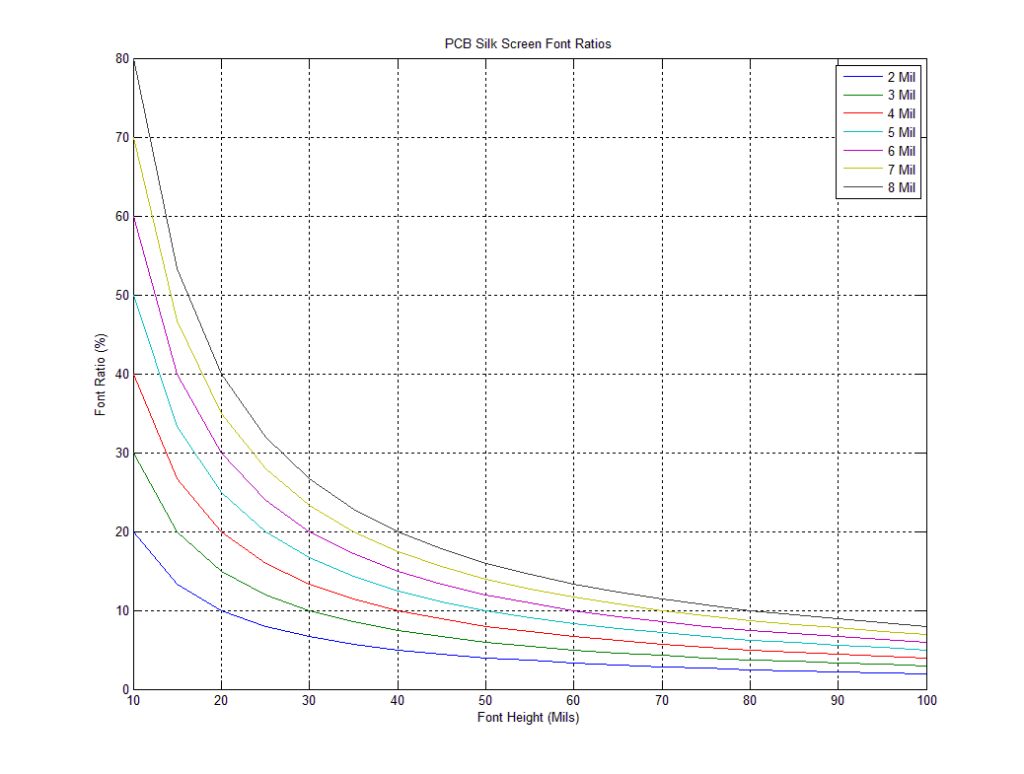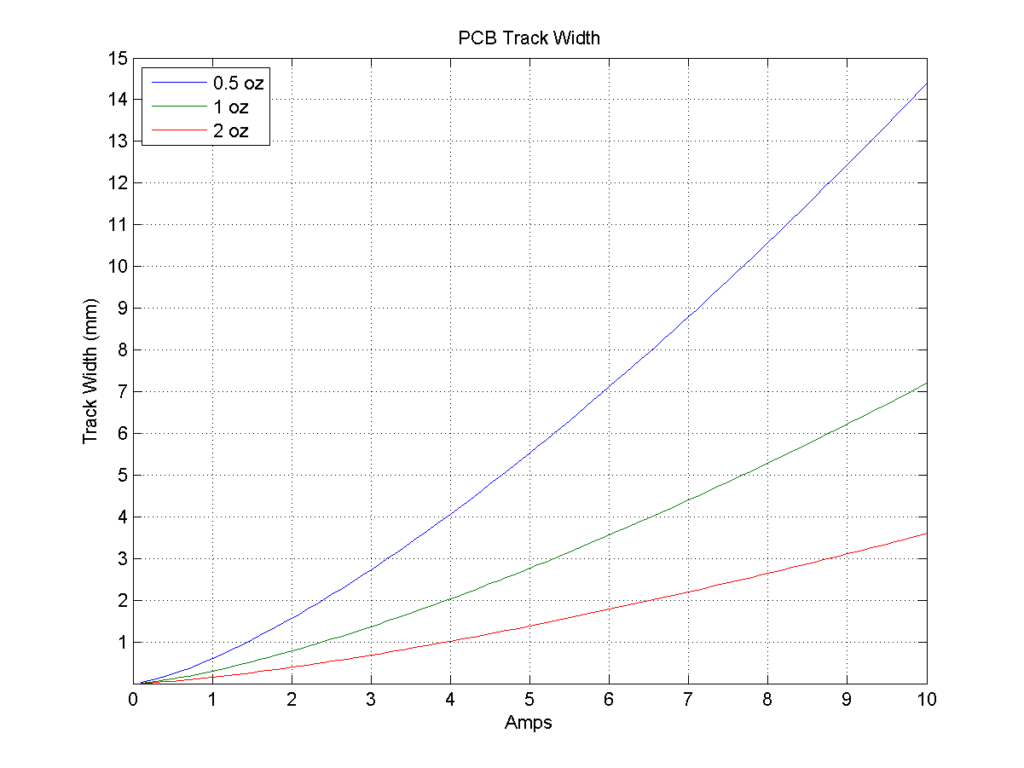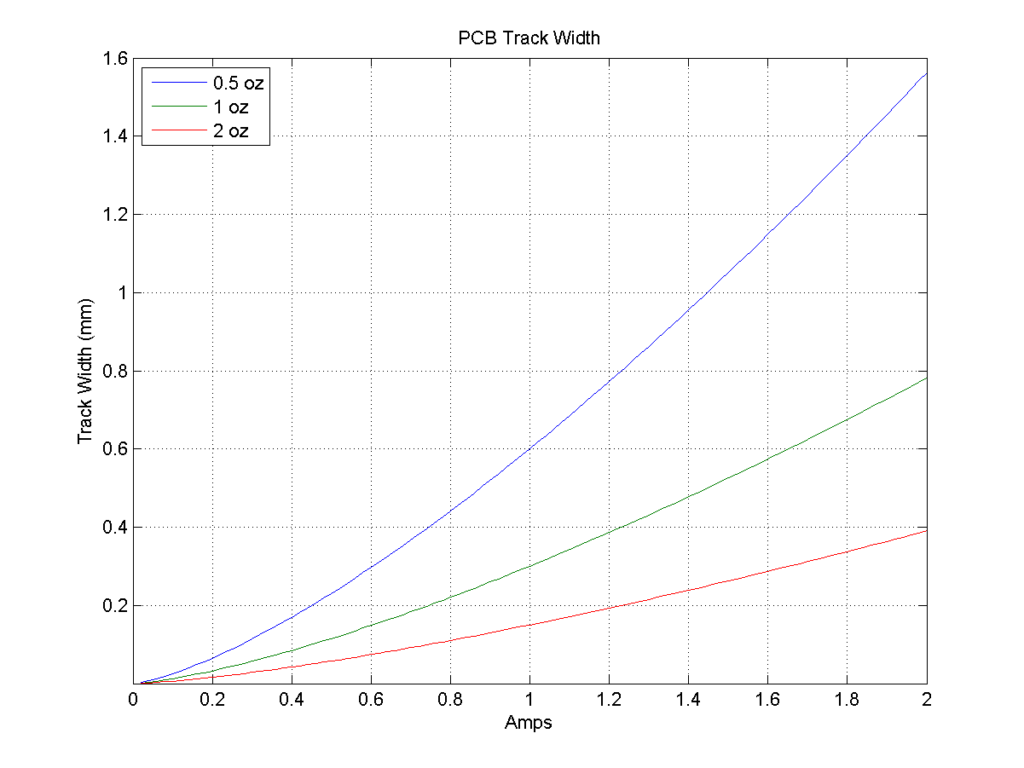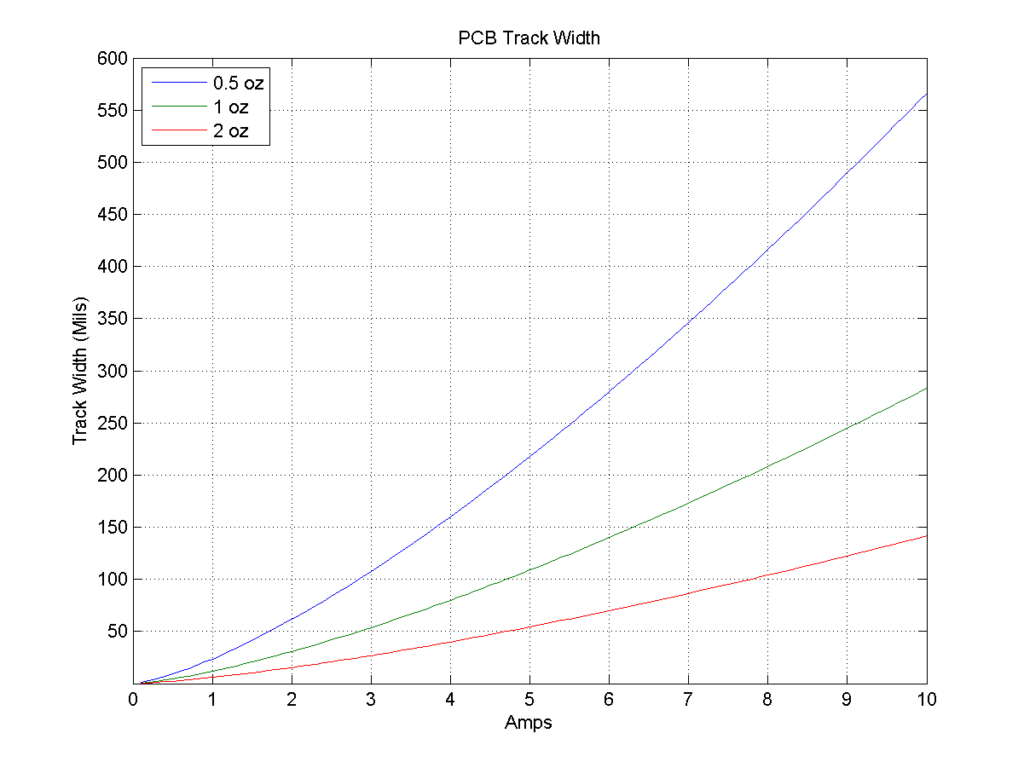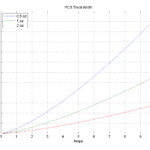
Recently I had to make a series of circuit boards using Eagle Cad.
I spent a lot of time calculating track widths to make sure my circuit board could handle the current I was using.
Then I had to do more calculations for font ratios. so that that all lines were wide enough to work with the silk screening process.
Sick of this; I quickly used matlab to create a few charts so I could look up the answers quickly.
I thought I would share these charts and the matlab scripts, hope they are useful.
Font Ratio Chart
To my experience, In Eagle Cad (and others) font ratios for silk screens work best using vector fonts. The cam processor, other tools, and factory will often use vector fonts regardless; – so using vector fonts tends to keep things compatible. In the text properties dialogue you must set the ratio correctly so that (Size * Ratio) > “Factory Minimum Line Width”. To make it worse, fonts are best wrangled using Mils (1/1000th of an inch [what’s an inch]).
Typically in Eagle Cad, I would set up text for silk-screening as follows.
Anyway, here is the chart
To use it:
- Find the colour that corresponds to your manufactures minimum silk screen resolution.
- Find your font height in the x-axis
- The corresponding ratio is given in the y-axis.
PCB Track Width Chart
Track width is related to a lot of factors (acceptable temperatures. how insulated the tracks are from the air, current, acceptable power loss, etc). For anything complicated (internal PCB layers, high currents/voltages, installation in a vehicle/ heater / oven) go do proper calculations!
Looking for a good track width calculator, I found this and like it a lot: http://www.4pcb.com/trace-width-calculator.html
99% of the time, as a hobbyist, you just want an external PCB track that does not raise in temperature by more than 10ºC. You would be using either 0.5, 1 or 2 oz copper tracks (eek, more imperial units). So I implemented the formula presented on the calculator mentioned above in matlab. Then I plotted 3 lines, one for each common copper thickness, creating charts that seem correct for normal hobbyist type situations.
Four charts follow metric and imperial versions of high and low current situations. Find the graph that suits you and keep it handy.
Disclaimer: Your mileage may vary. A) I may be wrong, and accept no liability for that. B) Silkscreens, lacquer, protective coatings, hot electrical components may invalidate these figures. If your doing anything medical / military / safety critical / mass produced / potentially dangerous; this page is not an appropriate source of information, go find an engineering book, or something peer reviewed.
Metric – High Amps
Metric – Low Amps
Mils (Imperial)- High Amps
Mils (Imperial)- Low Amps
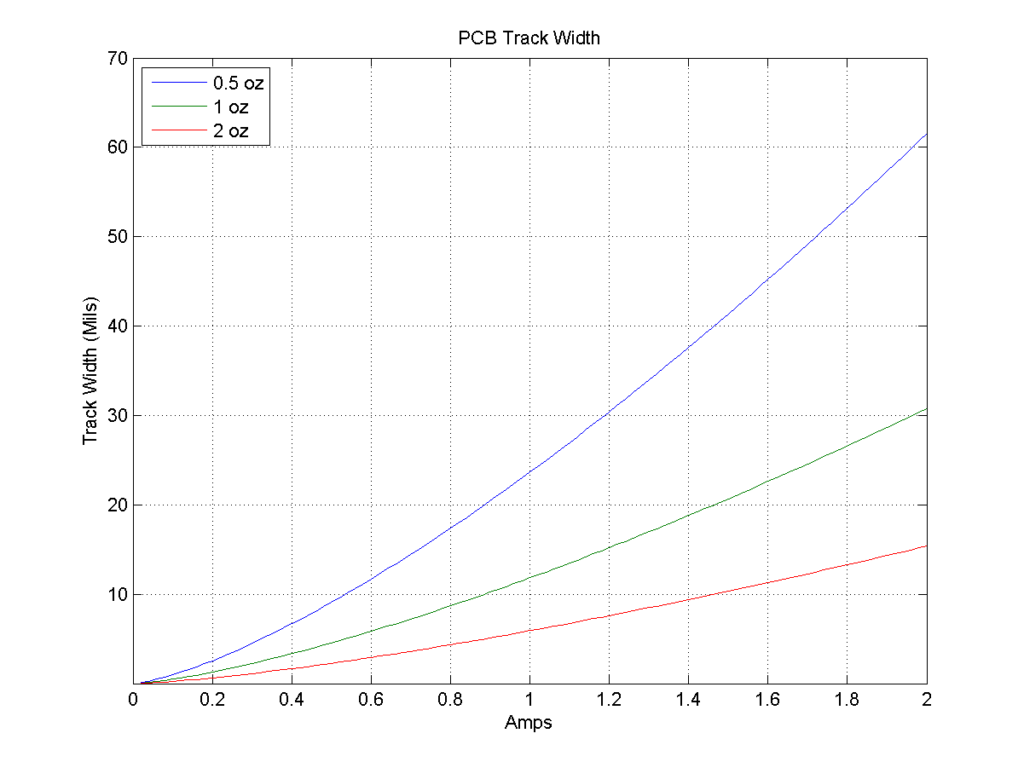
Source Code
Fonts
%----------------------------------------------------------------------------------%
% BUSYDUCKS.COM %
% Making you pro-duck-tive %
% %
% Author: Duckman Date: 10/3/15 Ver: 1.0 Licence: Creative Commons (by-sa) %
% %
% Calculates silckscreen font ratios. %
% Compile with Matlab / Possibly Octave %
% %
% Permision given to freely copy/paste "code snippets" into your own code. For %
% other uses (e.g. derivative works) the Creative Commons Attribution Share- %
% alike license applies (cite busyducks.com). This means commercial use is ok. %
%----------------------------------------------------------------------------------%
s = [10 : 5 : 100];
r = zeros(7, max(size(s)))
for x = 2:8
r(x-1,:) = ((x*100) ./ s)';
plot(s, r);
end
plot(s, r);
title('PCB Silk Screen Font Ratios')
xlabel('Font Height (Mils)')
ylabel('Font Ratio (%)')
legend('2 Mil', '3 Mil', '4 Mil', '5 Mil', '6 Mil', '7 Mil', '8 Mil');
grid on
Track Width
%----------------------------------------------------------------------------------%
% BUSYDUCKS.COM %
% Making you pro-duck-tive %
% %
% Author: Duckman Date: 10/3/15 Ver: 1.0 Licence: Creative Commons (by-sa) %
% %
% Calculates Track widths. %
% Compile with Matlab / Possibly Octave %
% %
% Permision given to freely copy/paste "code snippets" into your own code. For %
% other uses (e.g. derivative works) the Creative Commons Attribution Share- %
% alike license applies (cite busyducks.com). This means commercial use is ok. %
%----------------------------------------------------------------------------------%
function plotTraceWidth (metric, small)
%Formula from: http://www.4pcb.com/trace-width-calculator.html
%sample usage: plotTraceWidth(true, false);
%will save a .png to the current working directory;
amps = [0.1 : 0.1 : 10];
thickness = [0.5, 1, 2];
if(small)
amps = amps * 0.2;
end
%external layers, IPC-2221
k = 0.048;
b = 0.44;
c = 0.725;
tempRise = 10; %deg C
factor = (k*tempRise^b);
for it = 1:3
t = thickness(it);
area = amps./factor;
area = area.^(1/c);
width(it,:) = (area./(t*1.378))';
end
if (metric)
%convert to metric
mmPerMil = 0.0254;
width = width .* mmPerMil;
end
plot(amps, width);
title('PCB Track Width')
xlabel('Amps')
legend('0.5 oz', '1 oz', '2 oz', 2);
name = 'track_width';
if (metric)
ylabel('Track Width (mm)')
ticks = [1:15];
name = [name '_metric'];
if(small)
ticks = [0.2:0.2:2];
name = [name '_small'];
end
else
ylabel('Track Width (Mils)')
name = [name '_mils'];
ticks = [50:50:2000];
if(small)
ticks = [10:10:200];
name = [name '_small'];
end
end
set(gca,'Ytick', ticks)
grid on
saveas(gcf, [name '.png']);


